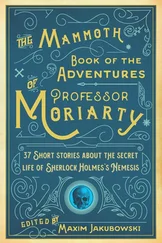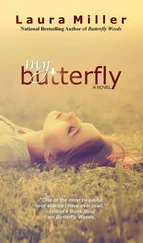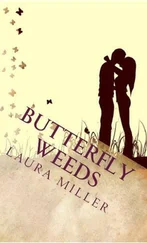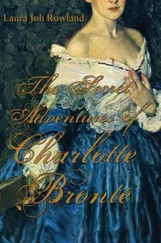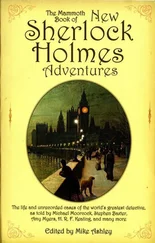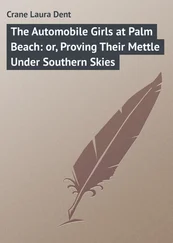Tolkien, too, was fascinated by the notion of Faerie and its inhabitants. These creatures, he wrote, are “not primarily concerned with us, nor we with them. Our fates are sundered, and our paths seldom meet. Even upon the borders of Faerie we encounter them only at some chance crossing of the ways.” The third road pointed out to Thomas the Rhymer, the road to Elfland (“elf” was one synonym for “fairy”), leads neither to heaven nor to hell, and it promises a place where the relentless moral weighing that Christianity imposes upon every action in this world simply doesn’t apply. It is not a safe place — to the contrary, the traditional beliefs hold that the less a human being has to do with fairies and their business, the better — but then the real out-of-doors has never been very safe, either.
Lewis, as an Irishman, knew fairies more intimately than his friend. The housemaid who helped raise him and his brother had seen them near Dundrum in county Down, where their aunt lived, and as a man Lewis had vacationed in a bungalow on Ireland’s northern coast which the locals wouldn’t approach after dark. It was haunted, but according to Lewis, the ghost didn’t frighten the neighbors nearly as much as “the Good People” also known to frequent the spot: “They are greatly dreaded,” he reported, “and called ‘the good people’ not because they are good but in order to propitiate them.” In Celtic legend, they are known as the Sidhe (Gaelic for “peace,” another placating euphemism), local spirits who fiercely guard their favored sites and are sometimes said to be descendants of the Tuatha Dé Danann, a mythical race of gods and heroes who were expelled from Ireland by human invaders before relocating to the Otherworld.
In his legendarium, Tolkien transformed these beings into the noble, ethereal elves who are migrating out of Middle-earth throughout The Lord of the Rings. (He conceived of his elves as a real historical race, of which Celtic myths and legends are a fanciful, degraded memory.) But in folklore, the Otherworld was never entirely detached from this one; it was like an alternate Britain, a different layer of reality, often contiguous with our own and occasionally accessible at certain points of convergence: a rabbit hole, perhaps, or a mirror, or a wardrobe.
Sometimes the Otherworld was said to be underground, its entrances in the barrows and other prehistoric sites that dotted the countryside. Most of these legends probably arose from attempts to explain how the ruins got there in the first place and from ancient rumors of the people who preceded the Celts. The stone spearheads found near their old haunts were called “elf-shot,” and the fairies were reputed to fear cold iron, possibly a memory of Stone Age natives subsiding before better-armed invaders. According to the peculiar mythology of Ireland, the land was home to a succession of five different “races” (some human, some giants, some much like gods) before the ancestors of the present occupants arrived.
The closest relation to the Sidhe in the Chronicles is the Lady of the Green Kirtle in The Silver Chair. Her dress is the same color as both the Queen of Elfland’s gown and the sash worn by the Green Knight, who, acting under the secret orders of Morgan Le Fay (whose surname means “the fairy”) tests Sir Gawain’s honor. The Lady of the Green Kirtle abducts Prince Rilian from Narnia and carries him off to her underground kingdom, where she detains him by enchantment, a typical act of fairy mischief. She is also a shape-shifter, specifically a lamia (a monster originating in Greek mythology), a child-devouring serpent that can transform itself into a beautiful woman. The Lady of the Green Kirtle is called a witch, but in many old tales the figures we now know as witches were originally described as fairies. She seems fair, but plays foul, tricking Jill, Eustace, and Puddleglum into seeking shelter with the giants of Harfang, who intend to eat them at their Autumn Feast.
If The Voyage of the Dawn Treader is the most medieval of the Chronicles, The Silver Chair has the most in common with traditional fairy tales. It shares their primal preoccupations with giants, kidnapping, and the prospect of being devoured, anxieties that are, if not peculiar to small children, then at least the most intense in them. Rereading the scenes at Harfang, where the giants are among the few characters in any of the seven books to treat the child characters like children, I was reminded of the time my three-year-old friend Corinne looked at me appraisingly and announced, “I don’t think you’ll eat me.” Until then, it hadn’t occurred to me just how menacing the world must sometimes look from her perspective or that I myself might constitute a kind of giant.
The Lady of the Green Kirtle does differ from traditional fairies in her imperial ambitions; she plans to conquer Narnia with her army of enslaved gnomes and to install Rilian as a puppet monarch. Why she should need to do this when he is already the rightful heir to the throne is never explained, and it would be more fairylike of her to simply capture the prince on a whim, much as a human being would decide to keep a caged bird as a pet. This is how the capricious “gentleman with the thistledown hair” in Susanna Clarke’s Jonathan Strange & Mr. Norrell collects certain choice Londoners, exceptionally attractive human specimens whom he forces to attend exhausting nightly balls at his decrepit castle. The rest of humanity doesn’t interest him much. The Lady of the Green Kirtle is deliberately, rather than incidentally, wicked. A Narnian dwarf, upon learning of the lady’s scheme, pronounces her “doubtless the same kind as that White Witch…. those Northern Witches always mean the same thing, but in every age they have a different plan for getting it.”
In truth, the White Witch — either how she first appears, as a variation on Hans Christian Andersen’s Scandinavian Snow Queen in The Lion, the Witch and the Wardrobe, or as the vaguely Babylonian Empress Jadis in The Magician’s Nephew — seems at best a remote relative of the Lady of the Green Kirtle, who is so entirely British. To the Green Witch, Lewis gives the most persuasive argument against faith in all the Chronicles, making her the mouthpiece of both his own youthful skepticism and the materialist beliefs held by the modernist contingent at Oxford. Though she is less overtly menacing than Jadis, this makes her a much more dangerous figure.
Realizing that the children and Puddleglum have broken her spell over the prince, the lady casts a drugged powder into the fireplace, strums a mandolin, and commences to argue away not only their god, but the entire aboveground world: “You have seen lamps, and so you imagined a bigger and better lamp and called it the sun. You’ve seen cats, and now you want a bigger and better cat, and it’s to be called a lion. Well, ’tis a pretty make-believe…. Look how you can put nothing into your make-believe without copying it from the real world, this world of mine, which is the only world.”
The heroes are saved when Puddleglum stamps out the fire, cutting the incense with the pronounced smell of “burnt Marsh-wiggle.” He announces that the witch may very well be right, but so what? “Four babies playing a game can make a play-world which licks your real world hollow.”
The Marsh-wiggle’s defiance affected me profoundly as a child — not as a defense of theism, of course, but as a defense of fairy tales; I agreed that sometimes make-believe really did lick real life. As an argument for religion, however, Puddleglum’s speech is feeble; he is saying, in effect, I don’t know whether what I believe is true, but I’d rather live in a world where it is than in a world where it isn’t, so I’m going to believe it whatever the evidence to the contrary. This is a variation on Lewis’s “argument from Joy,” the assertion that the human hunger for God is enough to demonstrate that God really does exist; if you want it enough, it’s as good as true. You might as well decide that you prefer the medieval universe to the Newtonian one, and adjust the physics textbooks accordingly.
Читать дальше

